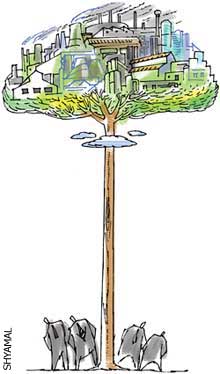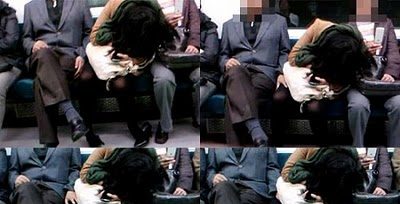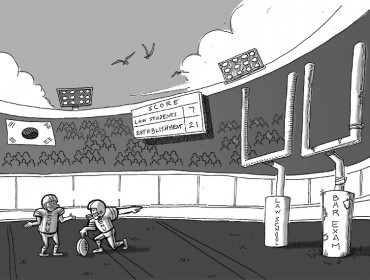By John Kay
This is part 2 in a 3-part series on the POSCO-India captive port/plant and mine project.
 Toward the end of last year I signed up to receive a regular news letter from the Asian Human Rights Commission (AHRC). Pretty soon after emails started to arrive I reached the conclusion that human rights violations must be a daily event in Asia, if these emails were any indication. Soon though I was suffering from a form of news fatigue as I read about the massacres of people on their way to vote in The Philippines, death threats and disappearances of journalists, human rights activists and whistle-blowers in Sri Lanka, and the abuses suffered by refugees at the hands of the authorities in Thailand; all seemingly without hope or an end in sight.
Toward the end of last year I signed up to receive a regular news letter from the Asian Human Rights Commission (AHRC). Pretty soon after emails started to arrive I reached the conclusion that human rights violations must be a daily event in Asia, if these emails were any indication. Soon though I was suffering from a form of news fatigue as I read about the massacres of people on their way to vote in The Philippines, death threats and disappearances of journalists, human rights activists and whistle-blowers in Sri Lanka, and the abuses suffered by refugees at the hands of the authorities in Thailand; all seemingly without hope or an end in sight.
On January 28 of this year, I received an email from civil society groups in South Korea condemning POSCO’s planned steel mill/captive port and iron ore mines project in the eastern state of Orissa in India. An alarm went off within me and I was no longer fatigued but indignant and alert. POSCO, the industrial behemoth, based in my second home town of Pohang was up to serious wrong doing in India; a fellow Asian nation.
The email forwarded by the AHRC was in the form of an open letter from the Korean Civil Society Alliance (KCSA) to the Minister of Environment and Forests in Delhi; stating their opposition to POSCO’s project in Orissa. This email alerted me to the issue and the facts on the ground. The KSCA had at its own expense conducted field research in the state of Orissa in 2008, and again in 2010. The KCSA’s research confirmed the findings of both the Saxena Committee and the Meena Gupta reports that POSCO’s project to build a steel mill, port and mines clearly violated the Forests Rights Act. The KCSA stated its belief that this proposed project will in the long run damage both POSCO and weaken Korean civil society. So this email by concerned and conscientious Koreans spurred me to take an interest and find out more.
Then on February 2, the AHRC forwarded a statement from POSCO Pratirodha Sangram Samiti (PPSS) the Anti-POSCO Mobilization Committee which is one of the largest organizations opposing POSCO’s plans in Orissa. The statement condemned the decision of the Ministry of Environment and Forests (MoEF), to grant clearance to the proposed POSCO project. As stated in the KCSA statement, this granting of clearance, this green light to POSCO, overlooked the recommendations of the Government of India’s very own committees’ findings. The N.C Saxena committee and the majority members of the POSCO review committee (headed by Ms Meena Gupta) were both constituted by the MoEF itself. The Saxena report termed the land acquisition as illegal because it violates the Forest Rights Act, 2006. The report of the majority of the POSCO review committee clearly states that there has been gross violation of environmental laws, fabrication of evidence, suppression of information and the perpetuation of forest rights violations. Specifically it points out that POSCO deliberately suppressed facts related to the Coastal Regulation Zone (CRZ). They also reported human rights violations by the state and by POSCO in the proposed project area. It goes on to say that as established by the Ministry’s own POSCO enquiry committee, the local inhabitants have rights to the land under the Forest Rights Act of 2006. As such the forest land in question cannot be taken for the project except if their rights are recognized and their consent given. Three separate bodies (two enquiry committees and the Ministry’s own statutory Forest Advisory Committee) are in agreement that the Orissa government has not implemented the Forest Rights Act and has lied about  the eligibility of the people in the area: Could this be any clearer at all?
the eligibility of the people in the area: Could this be any clearer at all?
In the words of the POSCO Enquiry Committee, the project risks ‘potentially disastrous impacts’ not only on the immediate area but on the entire surrounding district, which have ‘not even been assessed, let alone planned for.’ The PPSS rages eloquently against the idiocy of the MoEF and the Government of Orissa for failing to assess the conditions and needs of the people on the ground; for falling over backwards to do POSCO’s bidding and in so doing relinquishing all its responsibilities. It also calls the details of the MoU ‘robbery of its natural resources which is guaranteed to generate massive profits for POSCO while destroying huge areas and displacing even more people’. Finally the PPSS called for an immediate revoking of the clearance and a criminal investigation into the actions of officials involved.
Earlier I mentioned gross violations of environmental law; here I will try to go into some detail to explain exactly how dodgy this whole POSCO fuelled scheme is. POSCO’s proposed project will see the largest direct investment in India by a foreign company; however when it comes to the environmental clearance process (assessing potential impact on the ground), the project has been broken up into several smaller parts such as the steel plant, the port, the mines etc. The result of this piecemeal approach has the effect of obscuring the overall impact of the project which in turn leads to a lack of understanding on the part of the public.
Two separate Environmental Impact Assessments (EIA) were made for the port and for the steel plant. Both of these were Rapid EIAs (REIAs) although the legal requirement under the EIA Notification, 2006, and the global best practice is the performance of a comprehensive EIA. Several groups, including the Environmental Law Alliance Worldwide and the CSE (Centre for Science and Environment) having evaluated these REIAs and identified a series of gaps and lapses. The most glaring of which is that the two REIAs are based on data from just one season as opposed to a comprehensive EIA that needs to include information from three seasons. Therefore the REIAs are incomplete and low quality environmental data. Another example is that the REIA for the steel plant only mentions the subject of waste disposal but doesn’t specify what kind of waste materials, where they will be dumped, the operational standards by which the waste will be disposed, or the impact of the waste on ground and ambient air pollution. Nor does this REIA include a description of the 87km pipeline that POSCO plans to build to bring water from the Jobra barrage to the steel plant; and it fails to account for the impact of the pipeline.
Not only that but the REIA for the port fails to discuss the socio-economic  impact of the port; instead it limits itself strictly to a discussion of technical data about ocean currents, mortality rates of phytoplankton, etc. More disturbing, the data presented is not placed in any comparative context so that members of the public are unable to either understand the impact of the project or evaluate the desirability of it. The presentation of purely technical data in this way seems to be a deliberate tactic to limit the audience of the report to other experts, and hinder public participation in the project approval process.
impact of the port; instead it limits itself strictly to a discussion of technical data about ocean currents, mortality rates of phytoplankton, etc. More disturbing, the data presented is not placed in any comparative context so that members of the public are unable to either understand the impact of the project or evaluate the desirability of it. The presentation of purely technical data in this way seems to be a deliberate tactic to limit the audience of the report to other experts, and hinder public participation in the project approval process.
The port POSCO plans to build at the mouth of the Jatadhar River which is going to ruin the livelihood of 20-25,000 fisher folk and affect or displace approximately 22,000 people involved in betel vine cultivation is not even necessary because just 12 kms north along the coast there is already a fully functioning, publicly owned port—Paradeep port. It is believed that the port will become untenable directly as a result of POSCO’s captive port due to interferences to littoral drift, a geological process by which sediments move along a shoreline. The east coast of India’s littoral drift is one of the highest in the world, therefore constructing port berths, terminals and breakwaters as POSCO plans to do will obstruct the littoral drift. The effect of the obstruction is multiplied when the port is situated, as in the case of the POSCO port, at the mouth of a river. Movement of river sediment is blocked, and in turn can lead areas north of the river mouth to become sediment-starved; eventually those areas would subside through erosion. Since Paradeep port is only 12 kms north it is highly likely that this disruption of littoral drift would lead to the ‘gradual submergence of Paradeep port into the Bay of Bengal’.
Biswajit Mohanty, secretary of the Wildlife Society of Orissa, noted that the REIA has no information on the abundance of famed Olive Ridley Turtle populations and their dynamics, or information about the likely impact of shipping traffic, oil spillages and other marine pollution on the turtles, their nesting and breeding grounds. Orissa is home to the largest population of Olive Ridley Turtles in the world. Finally, as mentioned previously, the clearance granted to POSCO’s captive port also violates the CRZ Notification (1991) which protects fish breeding grounds by classifying them as CRZ-1, i.e. ‘ecologically sensitive areas’. But since those most likely to be affected are fisher folk who do not enjoy formal recognition of their rights in the management or protection of the coasts, their views and interests are being totally ignored.
This piecemeal and patchy approach to baseline data collection seems to be the general rule when it comes to environmental clearances issued by the Ministry of Environment and Forests (MoEF), which are often carried out in the absence of any real information as to whether there is any real potential for harm. Such an approach clearly goes against the precautionary principle laid down by the Supreme Court of India, which states ‘where there are threats of serious and irreversible damage, lack of scientific certainty should not be used as a reason for postponing measures to prevent environmental degradation’. The court also stated that it might be appropriate to place the burden of proof on the person proposing the potentially harmful activity in question. With this in mind the POSCO project should have its environmental clearance revoked, as it has clearly not provided the evidence according to the Supreme Court’s precautionary principle.
Along with the Environmental Impact Assessments (EIAs) public hearings have to be held through which the public can air any worries or concerns about the planned project. A joint public hearing for the planned captive port and the steel plant was held on April 15, 2007, at a high school in Kulanga Block which is nearly 20 kms away from the projected-affected Panchayats of Gada Kujanga, Dhinkia and Nuagoan. The law stipulates that the public hearing be held on the project site or in its close proximity. The law also states that two separate hearings should be organized for the separate projects but only one was held for both the steel plant and the port. Due to the choice of location many people affected by the project could not attend because of the cost of transport and lose of earnings whilst being away from work. Another significant detail is that Kujanga is known as a stronghold of the ruling BJD party (which actively supports the project); and if the prospect of facing crowds of hostile BJD supporters wasn’t enough to put people off travelling the 20 odd kilometres to attend, then surely the 12 platoons of paramilitary forces deployed into the project-affected area to intimidate the populace certainly seemed to do the trick.
Those who were concerned and courageous enough to attend noted POSCO Company officials seated on the stage next to the Orissa State Pollution Board (OSPB) representatives that were conducting the hearing. Such arrangements were in direct violations of the EIA guidelines, and of course ‘It is also evident that such an arrangement would have demonstrated to the local community their own position relative to that of POSCO officials, and that it would have had a chilling effect on testimonials that opposed the project.’
Other problems with the public hearing can be summarized as follows; POSCO falsified field reports by claiming that groups of surveyors had gone from house to house in 63 affected villages to conduct a sample survey, and that they had held focus group meetings with village heads, voluntary workers and others. Unfortunately the entire thing was made up neither surveys nor focus groups were held in any of the 63 villages. The POSCO REIA Report about the steel plant fails to include information on the personnel involved. Which includes information about names and qualifications of the surveyors that are supposed to have visited 63 villages.
Obviously if this information was present then POSCO’s claims could be verified for accuracy.
 Inexplicably women activists were not even allowed to speak and their written submissions were not recorded in the proceedings. The EIA notification, 2006, clearly requires that social impact as well as the environmental impacts of the project be included in the public hearing process. In spite of this villagers who attempted to describe the social costs of displacement were told in no uncertain terms by the chair, Dr Dilip Kumar Mohanty to limit their testimonies to the impact on the natural environment. There are many more criticisms of the public hearing process but I cannot go in to all of them here. Suffice to say you get the picture. For more details there is no better place to look than www.actionaidindia.org. And I’ll let Action Aid India’s Madhumita Ray have the last word:
Inexplicably women activists were not even allowed to speak and their written submissions were not recorded in the proceedings. The EIA notification, 2006, clearly requires that social impact as well as the environmental impacts of the project be included in the public hearing process. In spite of this villagers who attempted to describe the social costs of displacement were told in no uncertain terms by the chair, Dr Dilip Kumar Mohanty to limit their testimonies to the impact on the natural environment. There are many more criticisms of the public hearing process but I cannot go in to all of them here. Suffice to say you get the picture. For more details there is no better place to look than www.actionaidindia.org. And I’ll let Action Aid India’s Madhumita Ray have the last word:
‘A public hearing should be conducted in a systematic and transparent manner, ensuring widest public participation. Such disregard of due process at best points to ignorance of official procedure and at worst, connivance between the state and POSCO to manufacture consensus without the consent of those affected’.
Part 3 will examine how the blame is widely shared by the Government of Orissa along with POSCO, while scrutinizing the supposed benefits for the citizens of Orissa if the project is completed.







